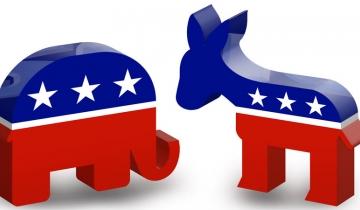Heading into 2022, we look forward to change and grab hold of our crystal balls for predictions of the future. Despite our best efforts to plan ahead, the past 2 years have not allowed for that to happen. So, we try again.
Several employment attorneys and organizations have shared workplace predictions. Here is a summary of the most common forecasts.
1. The COVID-19 pandemic is not over.
- Remote work options are still in demand. Whether work is hybrid or fully remote, a full return for those able to work remotely is not expected for some time.
- Vaccination mandates will continue to be prominent, regardless of federal mandates. Many municipalities and companies have already adopted vaccination or masking requirements.
- Booster shots will be required for employees to be considered fully vaccinated.
2. The National Labor Relations Board will begin to focus more on protecting employees’ rights in the workplace.
- Midterm elections are expected to bring a larger Republican population to the Senate, making President Biden’s elusive Protecting the Right to Organize (PRO) Act more difficult to pass. It is expected that the president will lean on the NLRB, Department of Labor, OSHA, and other government agencies to pass rules and regulations aimed at protecting employee rights.
- A ruling on the joint employment standard is expected in February. This could make it easier to classify employers as joint employers and will directly impact those working with staffing agencies.
- It will be easier to establish unfair labor practices against an employer violating employees’ rights to participate in protected concerted activity related to union organizing.
- A review of the definition of independent contractor is expected, including more strict standards in establishing someone as an employee versus an independent contractor. Entrepreneurial opportunity is expected to be the focal point of making the determination.
- The uptick of union elections and organizing is predicted. High-profile organizing events in 2021 brought awareness to the power of concerted activity. It is further expected that new rules surrounding smaller unit sizes will promote multi-unit groups within workplaces, meaning employers may be required to bargain with several smaller units rather than one large one.
3. Aspects of employment will continue to focus on pay, flexibility, and the talent shortage.
- Several states increased the minimum wage in January, and federal contractor minimum wage increased to $11.25 per hour and $7.90 for tipped employees working on or in connection with covered contracts. Any government contract entered into on or after January 30, 2022, will be subject to a minimum wage of $15 per hour in accordance with Executive Order 14026.
- Employers will continue to see resignations due to retirements, employees beginning independent business ventures, burnout, and fatigue throughout the year.
- A review of the minimum pay threshold for exempt pay is anticipated by the Department of Labor. The DOL also continues to watch remote hourly employees to ensure time is recorded and paid properly.
- Nonsolicitation and noncompete agreements were given more consideration in 2021, and that trend is expected to continue. Employees are separating from employers and taking coworkers and customers with them. Employers are beginning to use the agreements to aid in both employee and customer retention.
4. Safety and security for employees remains a top priority.
- Vaccination passports, masking, and other COVID-19 safety precautions will still be the focus for employers. The CDC also advocates for businesses to install high-efficiency particulate air (HEPA) cleaners and ultraviolet-C (UV-C) light filters to help purify the air. These are being installed in system upgrades tied to government grants, but it is expected that they will grow in popularity to help reduce the spread of COVID-19 in public places.
- An increase in ransomware attacks and data security breaches will bring a renewed focus to protecting employee data in 2022.
5. New forms of currency will begin to emerge within the workplace.
- Blockchain technology will continue to increase the popularity of cryptocurrency, reducing the need for tangible currency. Although this transition is expected to occur over several years, or even decades, there is a definite gain in popularity.
- NFTs, or nonfungible tokens, are being used to trade items of high value. NFTs are primarily tied to digital works of art, but there is potential for them to expand into digital images used in the workplace.
- As Bitcoin gains popularity, it is expected that employees may begin requesting digital pay over traditional currency.
Not all of these trends are brand new, although there is a common thread to be found—an ongoing focus on employees. Employees want to work for companies that offer competitive pay, good working conditions, and a sense that they are valued. Many trends for the upcoming year reflect those sentiments and it will be interesting to see if the predictions have an impact on the workplace of our future.





